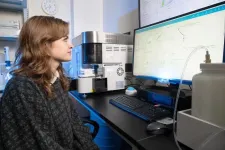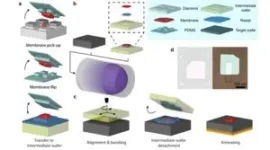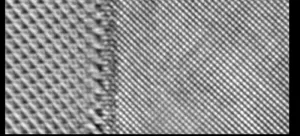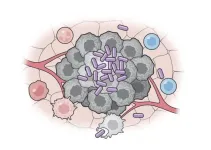(Press-News.org) Researchers at Colorado State University have identified an alternate method to study changes during the DNA replication process in lab settings using genetically modified yeast. The new approach offers a clearer window than current drug methods used to understand cell cycle arrest – a fundamental mechanism that is key to treating cancers and genetic issues.
The findings were published in the Proceedings of the National Academy of Sciences and were led at CSU by Assistant Professor Grant Schauer in the Department of Biochemistry and Molecular Biology. The work focuses on hydroxyurea, a chemotherapy drug used in clinical settings to treat cancer, which is also frequently used in research settings to arrest cells in their development cycle for study. Doing so allows researchers to better explore the complex process of how a genome’s DNA is accurately copied in cells before they divide.
This process happens frequently in the body. However, health issues arise if the DNA being copied becomes altered by harmful metabolic intermediates, UV light or chemotherapeutics. When cells undergoing replication encounter these problems at specific biologically managed checkpoints, the process is stopped to prevent further issues. Hydroxyurea is used to study how and when a cell halts the replication process by activating these stopping points for study of the intricate biological processes at play.
For decades, the drug was believed to work by halting production of the building blocks for DNA, but Schauer’s team noticed that the drug was also creating damaging and reactive oxygen species in key parts of the cell at the same time. Schauer said those unwanted reactions clouded insight into the cell’s “kill switch” mechanisms, which prevent DNA from being copied incorrectly in harsh oxidative environments.
“Our work shows that hydroxyurea is stopping this replication process in a less specific way than anyone had originally thought,” he said. “We found that oxidation was inhibiting DNA polymerases – the enzymatic machines that directly copy the DNA – by targeting iron atoms in the enzymes and making them apart. Something that persisted even after the drug was removed from the process.”
To address that problem, the CSU team developed a system that uses genetically engineered yeast cells known as RNR-deg. That system provides a less toxic and quickly reversible alternative to hydroxyurea to stop the process. Because hydroxyurea is widely used today, the new approach outlined in the paper could significantly change how research around cell arrest is accomplished.
Schauer said the team used flow cytometry to study the DNA content and processes of cells for the work. Research funding for the paper came from the National Institutes of Health and several undergraduate researchers contributed to the work, Schauer added.
Hannah Reitman, an undergraduate biochemistry student, served as an author on the paper after collecting and analyzing data for the project. She said work in the lab was intimidating at first but became a great learning experience.
“Through research on this project and in the lab, I have learned so many techniques and concepts that I would not have access to in a lecture,” she said. “You gain so much independence in lab and learn really good problem-solving skills. That is something that I will continue to expand upon throughout my entire career and I am eternally grateful to have.”
Schauer said the team will continue to work on this topic and plans to start transferring the technique from the yeast cells into human cells.
“RNR-deg yeast strain seems to be a very viable and potentially superior alternative,” he said. “It does not have any of the negative effects of hydroxyurea that have likely been clouding our understanding to this point. This is an important finding, and I look forward to continuing our research towards use in human cells in the future.”
END
Researchers offer alternative to hydroxyurea in study of DNA replication process
Colorado State University has identified an alternate method to study changes during the DNA replication process in lab settings using genetically modified yeast
2024-10-16
ELSE PRESS RELEASES FROM THIS DATE:
New diamond bonding technique a breakthrough for quantum devices
2024-10-16
Synthetic diamond is durable, inert, rigid, thermally conductive and chemically well-behaved—an elite material for both quantum and conventional electronics. But there’s one problem. Diamond only likes diamond.
It’s homoepitaxial, meaning it only grows on other diamonds, and integrating diamond into quantum or conventional computers, quantum sensors, cellphones, or other devices would mean sacrificing the diamond’s full potential or using large, expensive chunks of the precious material.
“Diamond stands alone in terms of its material properties, both for electronics—with its wide band gap, ...
Clean air and climate policies provide health benefits in New York City
2024-10-16
A new study analyzes the links between the enactment of major air pollution and climate policies in New York City and significant improvement in air quality during the period 1998-2021. It finds a cumulative beneficial effect of these policies both city-wide and among residents residing in communities that have been disproportionately affected by air pollution.
The study by environmental health scientists at Columbia University Mailman School of Public Health is published in the peer-reviewed journal Frontiers in Public Health.
“Because of the known significant associations between the pollutants studied and multiple adverse health effects, there are important implications for health ...
Folic acid may mitigate link between lead exposure during pregnancy and autistic behaviours in children
2024-10-16
New research gives another reason to take folic acid supplements while pregnant.
A new study by Simon Fraser University researchers has found that folate may weaken the link between blood-lead levels in pregnant women and autistic-like behaviours in their children.
Researchers from SFU’s Faculty of Health Sciences, led by PhD candidate Joshua Alampi, published the study in the journal Environmental Health Perspectives.
“Folic acid supplementation during pregnancy has numerous benefits to child health, especially brain development,” ...
MD Anderson Research Highlights for October 16, 2024
2024-10-16
HOUSTON ― The University of Texas MD Anderson Cancer Center’s Research Highlights showcases the latest breakthroughs in cancer care, research and prevention. These advances are made possible through seamless collaboration between MD Anderson’s world-leading clinicians and scientists, bringing discoveries from the lab to the clinic and back.
Novel therapeutic target overcomes treatment resistance in triple-negative breast cancer
Many patients with triple-negative breast cancer (TNBC) do not respond to combination ...
STEP Demo pilot plant achieves full operational conditions for Phase 1 of testing
2024-10-16
SAN ANTONIO — October 16, 2024 —The Supercritical Transformational Electric Power (STEP) Demo pilot plant, a $169 million, 10-megawatt supercritical carbon dioxide (sCO2) test facility at Southwest Research Institute (SwRI) in San Antonio, has completed its first phase of testing, having achieved its full operational speed of 27,000 rpm and operating at a target turbine inlet temperature of 500 degrees Celsius. As STEP achieved this milestone, it was synchronized with the electrical grid, generating approximately four megawatts of net power.
“Achieving full operating conditions while connected to the grid is a major advancement ...
Women more likely than men to die after heart surgery complications
2024-10-16
Despite having no greater chance of developing problems after high risk cardiovascular surgery, women are more likely than men to die from postoperative complications, a University of Michigan-led study suggests.
A patient dying of complications after surgery is often referred to as a “failure to rescue”.
Investigators assessed more than 850,000 cases of Medicare beneficiaries who had high risk heart surgery — including heart bypass, aortic aneurysm repair, and mitral and aortic valve repair — ...
Bacterial vaccine shows promise as cancer immunotherapy
2024-10-16
Columbia researchers have engineered probiotic bacteria that educate the immune system to destroy cancer cells, opening the door for a new class of cancer vaccines that take advantage of bacteria’s natural tumor-targeting properties. These microbial cancer vaccines can be personalized to attack each individual’s primary tumor and metastases, and may even prevent future recurrences.
In studies using mouse models of advanced colorectal cancer and melanoma, the bacterial vaccine supercharged the immune system to suppress the growth of – or in many cases eliminate – primary ...
Involuntary sweeps of homeless encampments do not improve public safety, study finds
2024-10-16
AURORA, Colo. (October 16, 2024) – A new study, out today in the Journal of Urban Health, finds that involuntary sweeps of homeless encampments in Denver, Colorado were not effective in reducing crime.
Researchers, led by first author Pranav Padmanabhan, research assistant and MPH student at the University of Colorado Anschutz Medical Campus, analyzed the effect of involuntary displacement on crime in one-quarter to three-quarters of a mile radius around sweep sites, among all sweeps between November ...
In utero exposure to maternal COVID-19 and offspring neurodevelopment through age 24 months
2024-10-16
About The Study: In this cohort study of pregnant individuals and offspring, exposure to maternal COVID-19 was not associated with abnormal neurodevelopmental screening results through 24 months’ postpartum. Continued study of diverse groups of children is needed because, among other factors, evidence suggests sensitivity of the developing fetal brain to maternal immune activation.
Corresponding Author: To contact the corresponding author, Eleni G. Jaswa, MD, MSc, MAS, email elenijaswa@gmail.com.
To access the embargoed study: Visit our For The Media website ...
Feeling the heat: a new approach to controlling heat flow in crystals
2024-10-16
Tokyo, Japan – Unwanted heating of electronic components hinders the performance of many devices. For example, the processing speed and memory available to silicon-based computer chips depend strongly on the ability to dissipate heat effectively. Unfortunately, despite high demand, thermal management remains challenging.
Now, in a study published in Nature, a team of researchers led by the Institute of Industrial Science, the University of Tokyo, has demonstrated the ability to control heat transfer in graphite crystals. Their novel approach applies concepts from fluid ...
LAST 30 PRESS RELEASES:
Electrodes created using light
Second-hand gift-giving is a well-deliberated decision
How human interaction drove evolution to make bears less aggressive
National Poll: Few parents offer teens guidance on healthy eating during holiday season
Cannabis derivatives could provide new ovarian cancer treatments
Raising strong yeast as a petroleum substitute
Clues to the origin of hot Jupiters hidden in their orbits
Canada’s reduced pledge to Global Fund will impact domestic health
1 in 4 children with major traumatic injuries not cared for in pediatric trauma centres
Duke and Duke-NUS’ joint cross-population research to uncover "East-West" differences in disease and care
Scientists to ‘spy’ on cancer- immune cell interactions using quantum technology breakthrough
Tech savvy users have most digital concerns
Making lighter work of calculating fluid and heat flow
Normalizing blood sugar can halve heart attack risk
Lowering blood sugar cuts heart attack risk in people with prediabetes
Study links genetic variants to risk of blinding eye disease in premature infants
Non-opioid ‘pain sponge’ therapy halts cartilage degeneration and relieves chronic pain
AI can pick up cultural values by mimicking how kids learn
China’s ecological redlines offer fast track to 30 x 30 global conservation goal
Invisible indoor threats: emerging household contaminants and their growing risks to human health
Adding antibody treatment to chemo boosts outcomes for children with rare cancer
Germline pathogenic variants among women without a history of breast cancer
Tanning beds triple melanoma risk, potentially causing broad DNA damage
Unique bond identified as key to viral infection speed
Indoor tanning makes youthful skin much older on a genetic level
Mouse model sheds new light on the causes and potential solutions to human GI problems linked to muscular dystrophy
The Journal of Nuclear Medicine ahead-of-print tip sheet: December 12, 2025
Smarter tools for peering into the microscopic world
Applications open for funding to conduct research in the Kinsey Institute archives
Global measure underestimates the severity of food insecurity
[Press-News.org] Researchers offer alternative to hydroxyurea in study of DNA replication processColorado State University has identified an alternate method to study changes during the DNA replication process in lab settings using genetically modified yeast





